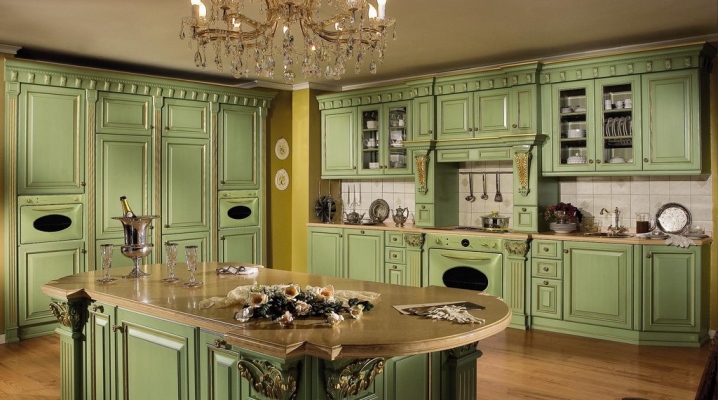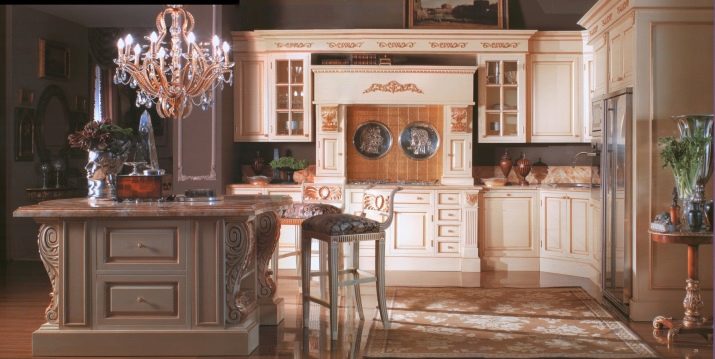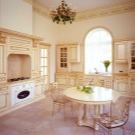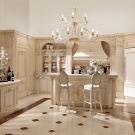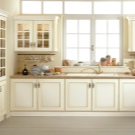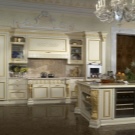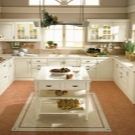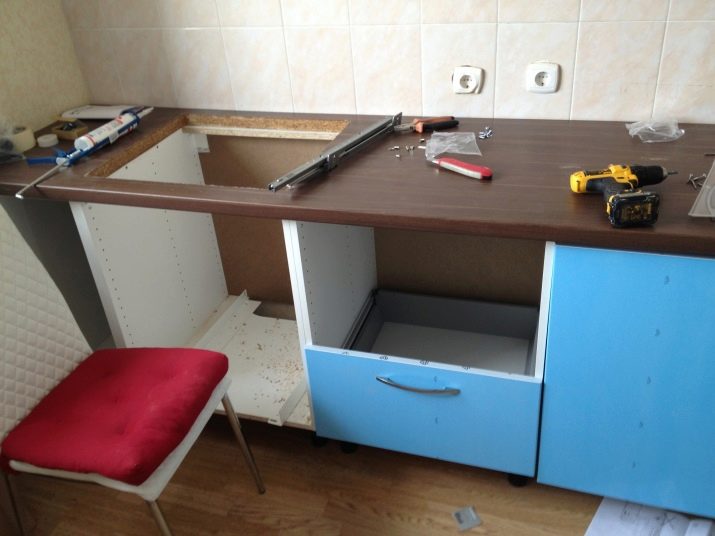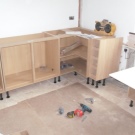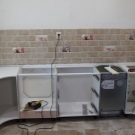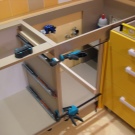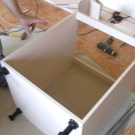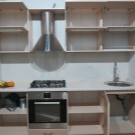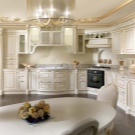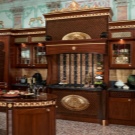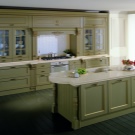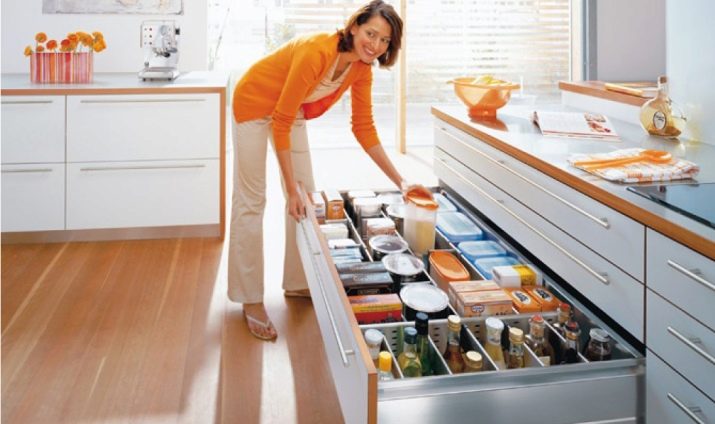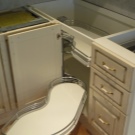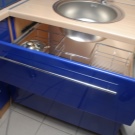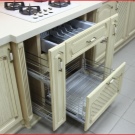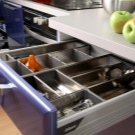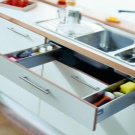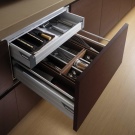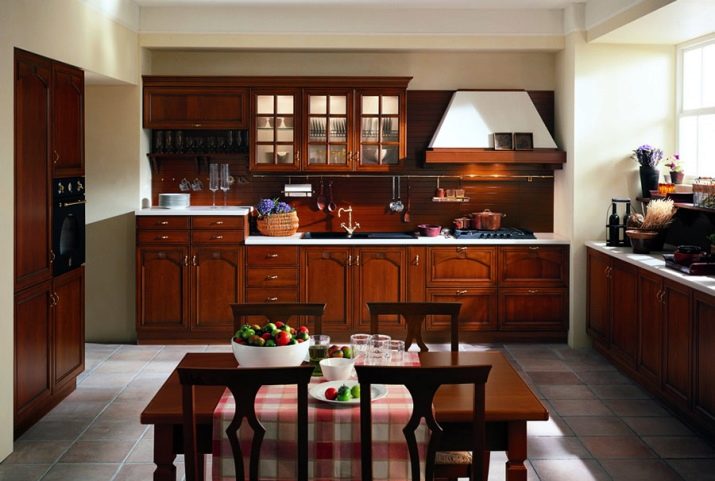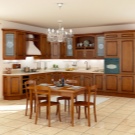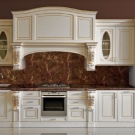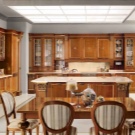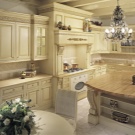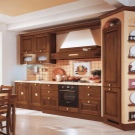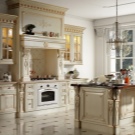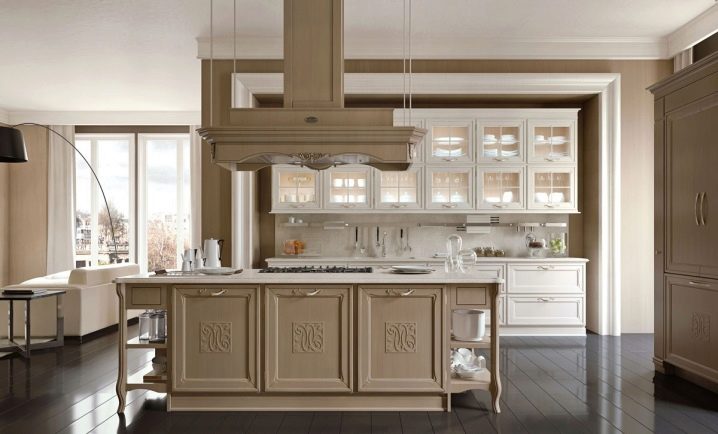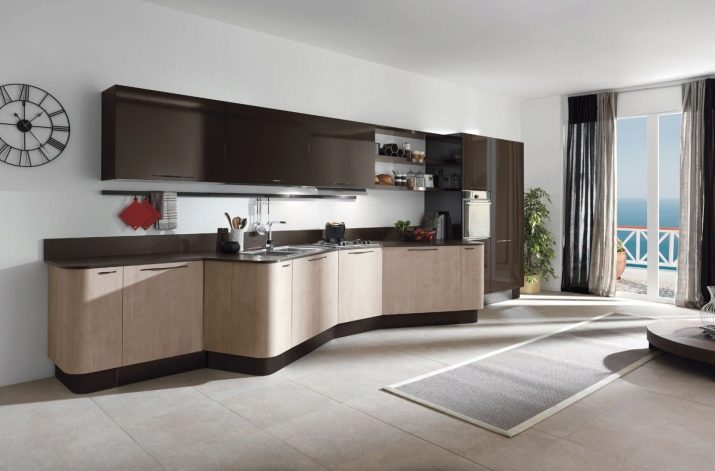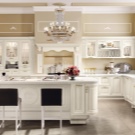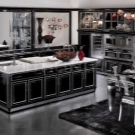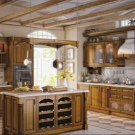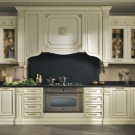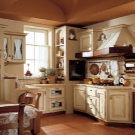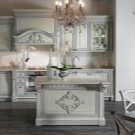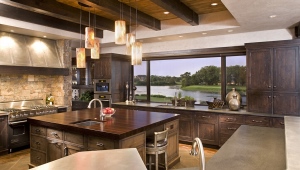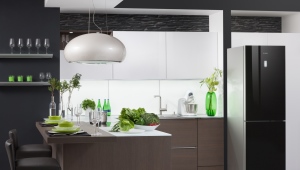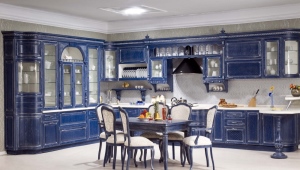Assembly of kitchen furniture
Modular kitchen furniture consists of several structural parts that you want to connect in the right order. Most manufacturers carry out the construction of cabinets according to standard schemes. This allows you to develop an optimal algorithm for the assembly of such products. Such operations are carried out manually on the basis of a special plan-scheme, which should be bundled with each factory product.
Proper preparation is the key to success.
The assembly of kitchen furniture begins with the implementation of a few simple recommendations:
- First of all, you need to check the horizontal and vertical level of the wall to which the cabinet will be adjacent. This is especially important for corner systems, where docking takes place simultaneously in two directions. After that, you should make a rough plan, as will be located all the attributes of the kitchen.
- In the kitchen, additional communications are often located (water supply, electric cables, etc.).These factors need to be considered when designing and locating attributes.
- Be sure to assemble, you need to make sure the complete set of the headset and all its components. When the parts are damaged, they should be replaced with analogues, which can be ordered (if the marriage was caused by the contractor) from the manufacturer.
- In order to properly connect all the parts, it is desirable to divide all the component parts into several categories. To do this, they can be sorted by size and individual structural modules. This approach will significantly save time and simplify the task.
Fittings
Assembly of cabinet furniture involves the use of special mechanisms and fasteners. Today there are many varieties of such accessories on the market that can be divided into several groups:
- Connecting structures. One of the most popular representatives of this category is shkant. The fastener of this type is a wooden cylinder of small size, which is driven into the holes of two connecting elements. With the help of such fasteners it is impossible to achieve high-quality fixation and therefore it is used quite rarely.
- Furniture screeds. These designs allow to obtain reliable fixation. There are many types of furniture screeds, among which there are such products:
- Confirmat (screw screw). To install it, you must first create holes;
- The coupler keg consists of the screw and the special cylinder in which the thread is made. The connection is made by twisting one element into another. The process is quite complex, so it is not always possible to perform it qualitatively without special skills.
- Conical fastener is a variation of the previous type of fastener;
- Furniture corner. They are located on the inside of the connecting corner. Fixation is performed using special screws, which are simply screwed into the furniture and fastener frame.
Main varieties
The operation of a kitchen set often depends on the quality of the mechanisms used, which are installed on the drawers or doors. Such accessories can be divided into several types:
- Furniture hinges are the mechanisms that provide opening and closing doors. Among all this diversity, there are several popular fasteners:
- Card loops are used everywhere. They have a beautiful design that allows you to install them in places where the structure will be noticeable;
- mortise hinges are often mounted on bar counters;
- Heel loops. They can be used to fix elements that do not carry a significant load on the mechanism.
- Furniture handles. The fittings of this type have a diverse and unique design, which depends on the specific manufacturer.
- Lifting systems. Mechanisms of this type allow to simplify the process of opening and fixing the door in a vertical position. Systems are mechanical or gas type.
- Roller mechanisms. Such designs are special poloski, which moves the inner thumbs. Made of plastic or metal. The latter look is more durable and reliable.
Please note that it is desirable to initially indicate the type of the desired fittings to the manufacturer, since in most cases they will use not very high-quality products. An alternative is to completely replace individual attributes, but this sometimes requires certain skills.
Assembly algorithm
One of the first steps in assembling a kitchen unit is to assemble the main frame of all modules. It should be noted that this procedure is completely similar for each individual box, whether it is independently mounted on a wall or installed on the floor. The frame is assembled in several successive steps:
- Initially, the walls of the cabinet are connected. The mounting sequence may be different and depends on the specific modification of the cabinet. It is possible to perform such operations with the help of special connecting fittings, which was considered earlier. In most cases, the manufacturer provides a complete set of such fasteners.
- After receiving the box, be sure to check whether its diagonals are equal. If it is not, then it is assembled obliquely, and it is better to fix it.
- At the next stage, the accessories are mounted (closers, guides, etc.). If the cabinet is intended for the upper tier, then it is necessary to attach special fasteners to it, with which the product will be hung.
- The final step is to install the legs.This attribute is not always present, but its attachment implies fixation with the help of small screws in a previously marked place.
Installation of door fronts
Such elements are made of wood-based panels, solid wood or glass. Different fixing systems are used to fix them. The algorithm for assembling door structures involves the following steps:
- Markup. The hinges should be located at a distance of 5-10 cm from the lower and upper edges. From the butt it is desirable to retreat about 21 mm. It is very important to accurately note the location of the fittings, so all measurements should be checked several times.
- After that, a hole is formed in the frame of the door using a Forstner cutter in which a hinge is placed. Fastening structures made with special screws.
- The next step is to fix the door to the wall of the module. For such purposes also pre-align the location of the hinge and establish a small gap between the door and the frame. This will allow the facade to open without obstruction. Fixation is also made with screws.
After completing the assembly of individual modules, you should arrange them in the kitchen in the correct order.To give the system stability, it is advisable to pull all the lockers together. For such purposes, special ties are used, under which you will need to drill holes. If you are not sure that you will cope with this task on your own, then it is better to entrust this work to the representative of the seller.
